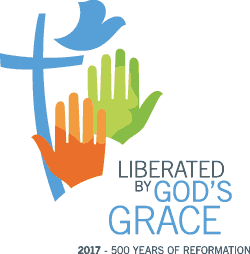Martin Luther is widely acknowledged to have started the Reformation with his Ninety-Five Theses that were made public on 31 October 1517 in Wittenberg. The Lutheran Reformation movement took tangible form in Augsburg, where in 1530 some German territorial princes and representatives of free cities signed a confession of faith, the Augsburg Confession, along with Luther’s Small Catechism (1529). Each signatory of the Augsburg Confession had accepted responsibility for reforming the church in his territory. This so-called ius reformandi made the Protestant ruler, as the executor of reform, the chief overseer and temporal head of the church in his territory. Although Luther and his coworkers considered this a temporary expedient, it endured, with modifications, until church and state were separated in Germany in 1918.
Today altogether 11 German territorial Lutheran churches form the German National Committee of The Lutheran World Federation. Next to the confessional Lutheran churches, there are many territorial united evangelical churches in Germany who have grown out of Lutheran reformation.
Plans for Reformation 500
German National Committee of the LWF:
- Luther-garden in Wittenberg: www.luthergarten.de. From the beginning of the Luther decade in Germany in 2008 until 2016 altogether 500 trees will have been planted in the Luther garden by representatives of Lutheran churches and ecumenical guests in commemoration of the Reformation Anniversary. The idea of a Luther-garden has been taken up in many regions and by several churches (see for instance Brazil, http://www.luteranos.com.br/conteudo/jardim-de-lutero-2). The Luther-garden will be handed over to the public during the Council meeting in 2016.
- Online feedback-forum on the document From Conflict to Communion: www.2017gemeinsam.de (in German) was active in April-November 2014; the content is still available on the web.
- Seminars of LWF-Center in Wittenberg (see http://www.lwb-zentrum-wittenberg.de/english-index.html)

